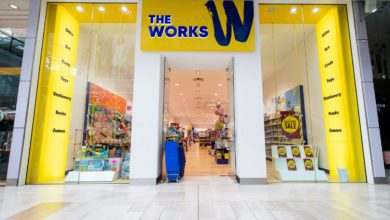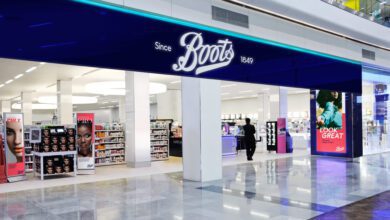Effective seasonal merchandising strategies ahead of Halloween season

With Halloween looming around the corner, retailers have an excellent opportunity to boost their sales and gain brand recognition, through seasonal merchandising. Halloween is a season when retailers promote everything from candy and pumpkins to costumes and decorations. Halloween spending topped £1bn in 2023, and consumer spending on bonfire night saw an increase of almost 20%.
During this Halloween season, seasonal merchandising strategy can help retailers not only to increase their sales and store traffic, but also increase spur-of-the-moment purchases, with research revealing that 40% of all seasonal sales are spur-of-the-moment purchases.
However, while seasonal merchandise comes with various benefits, this merchandising technique still requires effective strategies and execution to achieve those benefits and avoid overstocking.
Listed below are a few ways in which retailers can execute seasonal merchandising effectively during the Halloween season.
Understand your customers and the market
Before choosing a seasonal product it is important for businesses to understand their target audience. Retailers must anticipate what products or services will be in demand during specific seasons. This requires analysing past sales data, monitoring current trends, and even conducting customer surveys to gain insights into what drives purchasing decisions during different times of the year.
For example, during the Halloween season, consumers may prioritise candies, decorations, costumes and pumpkins. By understanding these patterns, retailers can stock the right products in the right quantities, ensuring they meet customer demand without overstocking.
Plan ahead and review inventory levels
Given that seasonal merchandise has a limited shelf life, it’s best to plan ahead to avoid waste and lost opportunity. Many brands begin marketing their promotional products weeks before the actual holiday begins. That’s because consumers may purchase the product before the holiday. Additionally, doing so will encourage them to buy it a second time for the actual holiday if they enjoy it.
Retailers must also review inventory levels to balance having enough stock to meet demand while avoiding excess inventory that could lead to markdowns and lost revenue. Utilising advanced inventory management systems can help retailers monitor stock levels in real-time, automate reordering, and manage distribution across multiple locations. Additionally, businesses should consider the lead times required for ordering and receiving seasonal merchandise to ensure products arrive well before the season starts.
Theme and visual merchandising
Visual merchandising plays a significant role in capturing consumer attention and driving sales. Seasonal displays, window decorations, and in-store signage should reflect the current season’s theme and create an inviting atmosphere that encourages customers to explore and shop.
Retailers can use colour schemes, lighting, and thematic props to create the right mood for the season. For instance, window displays featuring a backdrop of a haunted house or an enchanted forest, dim lights, Halloween colours, such as black, orange, and purple, and spooky displays such as skeletons, cobwebs could be more appropriate for Halloween. The goal is to create an immersive shopping experience that resonates with customers and enhances their desire to buy seasonal products.
Moreover, it is important to ensure retailers place their seasonal products and product display in a relevant and visible spot. Shoppers need to see your products to buy them and high-trafficked areas are the ideal place to encourage impulse purchases.
Promotional campaigns and marketing
Another key component of seasonal merchandising is promotional campaigns. Retailers should create targeted marketing strategies that highlight seasonal products and offers. These campaigns can include discounts, bundle deals, and limited-time offers that create a sense of urgency and encourage immediate purchases.
Utilising email marketing, social media, and digital advertising can help reach a broader audience and drive traffic to both online and physical stores.
Omnichannel consistency
In today’s retail environment, customers expect a seamless shopping experience across all channels, whether they’re browsing online, on a mobile app, or in-store. Ensuring consistency in seasonal merchandising across all platforms is essential for reinforcing brand identity and maximising sales. This means that the online store, social media platforms, email campaigns, and physical locations should all reflect the same seasonal strategy. Consistent messaging and visuals help reinforce the seasonal narrative and drive customers to make purchases, regardless of the platform they use.
Preparing for season transitions
One of the challenges of seasonal merchandising is managing the transition between seasons. Retailers need to plan for these shifts to ensure a smooth transition from one season to the next without leaving excess seasonal inventory on the shelves.
End-of-season sales, clearance events, and targeted promotions can help move remaining inventory before the new season begins. Additionally, retailers should start planning and ordering for the upcoming season well in advance to ensure they’re ready to launch as soon as the current season ends.







